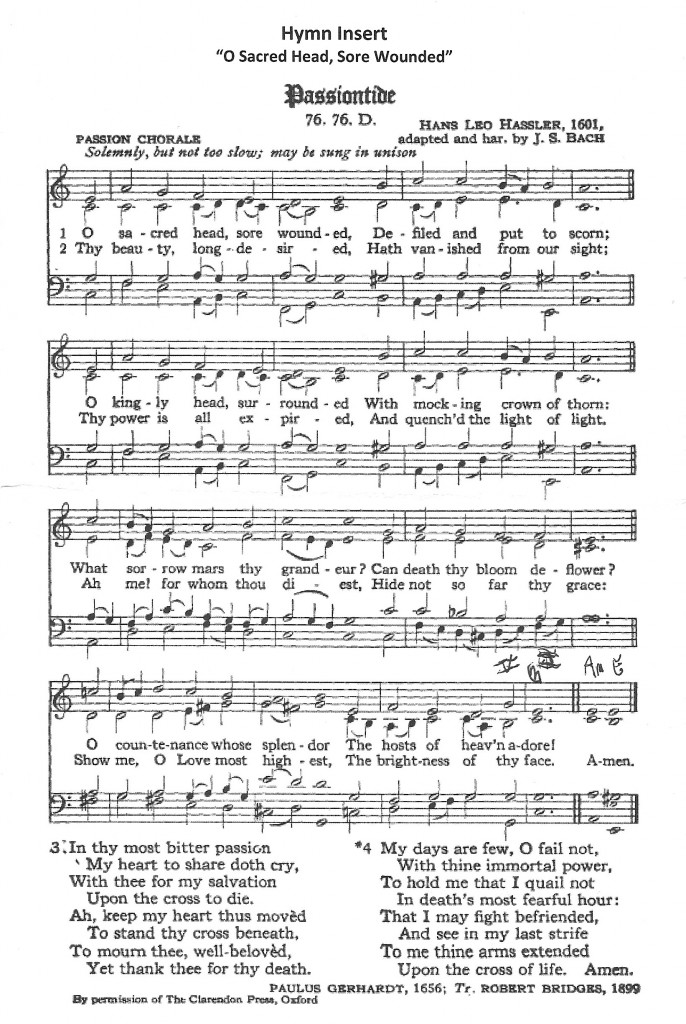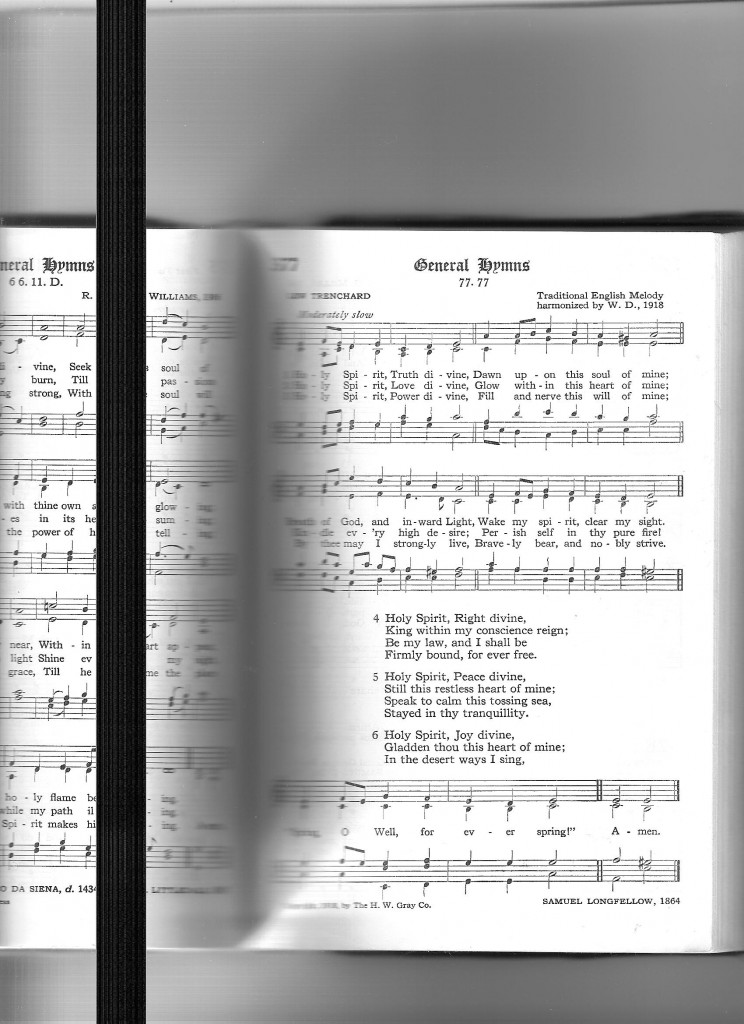Often in church services I find music distracting and/or boring. Part of this is undoubtedly my own problems (which is outside the scope of this blog), but one reason may be that I frequently analyze the music too much.
Today we were at a service because Matt Brench was speaking/teaching there. Here’s a hymn we sang:
The last two chords are very surprising! Normally you expect the standard plagal “amen” cadence of IV I as a little tag (at the end of almost every hymn in the book). This one, harmonized by Bach, does something I’ve never seen before instead. After the standard V I progression in the key of C, we have a harmonic HALF cadence in the relative minor! Yes, that’s Am – E which follows a happy G7 – C. Very odd! I showed this to our resident amazing piano player, Larry Williams. He had never seen it before either!
Oh, wait! I just thought of something…
This COULD be a plagal cadence after all… a Picardy third plagal cadence in the key of Em! That would actually make more sense than a half cadence at the end of a song. I think I’m going to go with this for now.
Maybe you have a different opinion 🙂 I think Bach was feeling a little frisky that day, maybe he ate a hot pepper for lunch or something, and just wanted to be a little funky.
EDIT:
Matt Brench wrote me back today and posted this picture of the *exact* same cadence! It’s not even by Bach!
I also thought of something else it could be… a *borrowed* plagal cadence in the key of E (mediant). Borrowed iv chords are pretty common (even today)… so in other words:
C: V I E: *iv I
http://academic.udayton.edu/PhillipMagnuson/soundpatterns/chromaticIII/chromed.html


Leave a Reply